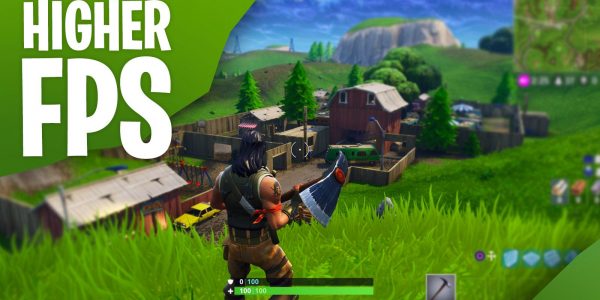Looking for ways to boost your network performance and reduce that nuisance speed lag? You’re at the right place. From getting to know about how to get higher FPS to what is port forwarding, we’re covering it all so that you enjoy your most favorite game.
Unlike a gaming console where developers optimize their games for a particular set of hardware, PCs come in various options. Several PCs have to depend on a GPU that’s integrated into the main CPU. In contrast, others have blazing-fast graphics cards that take your gaming experience to a whole new level.
If you’re hoping to indulge in some serious gaming, let’s begin by getting you a higher FPS or Frames per Second so that you relish a great gaming experience. Here’s what you should do:
Reduce your resolution
If you are not getting an adequate framerate at UHD or 3840×2160, then you should drop it down to HD or 1920×1080. By degrading the resolution, your game will definitely take a dent in terms of resolution as pixels would be more pixelated, but that might be a needed sacrifice in order to run the game smoothly at an acceptable framerate. Unless you upgrade your graphics card.
Update your graphics card drivers
This is pretty simple, and I’m sure you’ve got this covered. Running old drivers fails to deliver the adequate performance. To update your drivers, you’ll have to begin by figuring out which video card you have. Luckily, most modern GPUs will routinely prompt you to update your GPU drivers especially if you have automatic updates switched on.
Change the game’s video settings
If you’re not getting the performance you like, try playing with your game video settings and adjust changes accordingly.
Overclock your hardware
While overclocking is something that’s looked down upon, it yields some serious power. If you know what you’re doing and understand the risks involved, then, by all means, go ahead. However, do keep in mind that if something goes wrong, your video card, CPU, RAM, or really, your entire computer is gone.
Use PC optimization software
Optimizing your PC regularly is the way to move forward. It’s just like a maintenance tool that ensures your PC is in good shape and nothing else is taking up too much of power.
Now that you’ve setup your FPS to its ideal capacity, let’s move forward with an ingenious way of reducing lag while you’re gaming – Port Forwarding. Buckle up as it may get a bit technical but well worth your efforts.
What is Port Forwarding?
If you’ve run into a problem of setting up a game server, you must have come across the term – Port forwarding. It allows computers over the internet to connect to a specific computer or service within a private network. Basically, it makes your computer accessible over the internet even though you’re behind a router.
Port Forwarding is a setting in your router that tells traffic going to a specific port on your LAN to be then forwarded to an IP address inside your LAN. To do this, you have to head over to the settings of your router.
Once you’ve logged in, you’ll see all the different settings for your router, and what you want to find is a setting for port forwarding. If it’s not apparent where the port forwarding settings are, then you can look up guides for your specific router. Once you’ve found the setting, you can give this setting a name and then type the port that you want to use.
The Xbox Live internet gaming service uses several different port numbers, including UDP port 88.
If Port Forwarding isn’t Configured
Without port forwarding configured, your router does not know what to do with any request that comes your way. In your case, when gaming online, other people send you requests so that you can team up and play a game. If you’ve got the port configured, people from the wider network can easily play with you without any latency issues.
In addition, port forwarding is a smart way of securing public IP addresses. It can safeguard servers and other people on the network from intruders and also provides you with the ability to limit access to and from a network. Essentially, port forwarding adds an additional layer of security to vulnerable networks.
In short, port forwarding is mostly used to keep unwelcome traffic entirely off the network. It further allows network administrators to use a single IP address for all external communications on the Internet. Port forwarding is especially useful for home network users who may wish to run a Web server or gaming server on one network. The best thing about Port Forwarding is that it has proven to reduce lag when communicating over the wider internet or gaming with people who are located in the other corner of the world. Most of the gamers use VPN to play with their friends because of regional distance.
In a Nutshell
There you have it, all it takes it simple steps to enhance your frame per second and reduce lag while gaming whether you’re using a PC, PlayStation, Xbox. To sum it up, you have to make sure you have the right system which can accommodate your gaming needs.
If not, it can be heavy on your wallet, but at some point, you’ll soon understand that no matter what amount of optimization you do, it won’t be beneficial if your system isn’t up to the task.
In the end, it all comes down to upgrading your hardware as new games require more power that old cards are often unable to provide. Coupled with Port Forwarding, you can bypass network congestion and achieve a high response time. Enjoy gaming!




